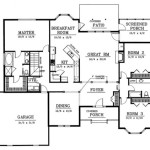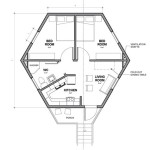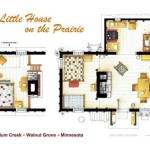Victorian Doll House Plans: A Guide to Architectural Intricacy and Miniature Design
Victorian dollhouses represent more than just playthings; they are miniature architectural marvels reflecting the ornate style and societal values of the Victorian era. The construction of these dollhouses, especially from scratch, necessitates a thorough understanding of Victorian architecture principles and the availability of detailed and historically accurate plans. This article explores the key aspects of Victorian dollhouse plans, providing insights into their design elements, common structural features, and resources for obtaining or creating them.
Understanding Victorian Architectural Styles for Dollhouse Design
The Victorian era, spanning from 1837 to 1901, encompassed a variety of architectural styles, each with unique characteristics. These styles significantly influenced the design of Victorian dollhouses, making familiarity with them crucial for creating an authentic miniature replica. Common Victorian architectural styles seen in dollhouse plans include Queen Anne, Gothic Revival, Italianate, and Second Empire.
Queen Anne architecture, perhaps the most recognizable Victorian style, is characterized by assymetrical facades, elaborate ornamentation, towers, bays, and sweeping porches. Queen Anne dollhouse plans often feature gables with decorative shingles, intricate spindlework, and multiple stories. Color plays a vital role, with houses displaying a palette of contrasting shades to accentuate detail.
Gothic Revival architecture draws its inspiration from medieval cathedrals. It features pointed arches, steep gables, and elaborate tracery. Gothic Revival dollhouse plans may include elements such as arched windows, buttresses, and crenellated rooflines. While less common than Queen Anne dollhouses, Gothic Revival dollhouses offer a dramatic and distinctive aesthetic.
The Italianate style, popular from the mid-19th century through the early 20th century, is recognized by its low-pitched roofs, wide overhanging eaves supported by decorative brackets, and tall, narrow windows. Italianate dollhouse plans often incorporate these features, along with rectangular shapes and symmetrical designs. A prominent cupola is another characteristic element frequently replicated in miniature.
Second Empire architecture, named for the reign of Napoleon III in France, is characterized by its Mansard roof - a double-sloped roof with dormer windows. Second Empire dollhouse plans feature this distinctive roof style, along with decorative cornices, paired brackets, and elaborate window detailing. The Mansard roof provides additional attic space, often incorporated into the dollhouse design.
Understanding these architectural styles allows crafters to select dollhouse plans that align with their preferred aesthetic and level of construction complexity. Detailed plans should incorporate specific elements associated with each style, ensuring a realistic and historically accurate representation.
Key Elements of Victorian Doll House Plans
Detailed Victorian dollhouse plans go beyond basic structural outlines to encompass a wide range of elements, including floor plans, elevations, and details of interior and exterior ornamentation. These elements are essential for accurate construction and replication of the Victorian aesthetic. The plans often specify dimensions, materials, and construction techniques to guide the builder through each stage of the process.
Floor plans delineate the layout of each room, including the placement of walls, doors, windows, and staircases. Victorian dollhouse floor plans often include parlors, dining rooms, kitchens, bedrooms, and nurseries, reflecting the typical arrangement of Victorian homes. The plans should indicate accurate room sizes and proportions, ensuring that furniture and accessories can be appropriately scaled.
Elevations provide a view of the dollhouse from different angles, showing the exterior appearance of each facade. Elevations depict the placement of windows, doors, porches, and other architectural features. They also illustrate the roofline, including the style and pitch of the roof, as well as the placement of chimneys and dormers. Detailed elevations are essential for accurately replicating the exterior ornamentation of the dollhouse.
Detailed sections of the plans illustrate the construction of specific elements, such as windows, doors, staircases, and decorative trim. These sections provide precise measurements and construction techniques, ensuring that each element is accurately replicated. Detailed sections are particularly important for intricate features, such as spindlework, cornices, and brackets.
Material lists specify the types and quantities of materials required for construction. Common materials for Victorian dollhouses include wood, plywood, cardstock, and various types of trim and molding. The material list should specify the dimensions and grades of wood required, as well as the types of adhesives and finishes to be used. An accurate material list helps builders avoid shortages and ensures a consistent appearance throughout the dollhouse.
Construction notes provide step-by-step instructions for assembling the dollhouse. These notes should be clear and concise, explaining each stage of the construction process in detail. Construction notes may include diagrams and illustrations to clarify complex procedures. They should also address potential challenges and offer solutions for overcoming them.
Finding and Utilizing Victorian Dollhouse Plans
Victorian dollhouse plans are available from a variety of sources, including online retailers, specialty crafting stores, and historical societies. Some plans are available for free, while others must be purchased. When selecting plans, it is essential to consider the builder's skill level, the desired size and complexity of the dollhouse, and the accuracy of the historical details.
Online retailers offer a wide selection of Victorian dollhouse plans, ranging from simple designs to elaborate multi-story structures. These retailers often provide detailed descriptions and images of the completed dollhouses, allowing builders to visualize the final product. Some retailers also offer customer reviews, which can provide valuable insights into the quality and accuracy of the plans.
Specialty crafting stores often carry Victorian dollhouse plans, along with the materials and tools needed for construction. These stores may offer personalized advice and guidance from experienced crafters. They may also host workshops and classes on dollhouse construction, providing hands-on instruction and support.
Historical societies and museums may offer Victorian dollhouse plans as part of their collections. These plans are often based on original architectural drawings and historical documents, ensuring a high degree of accuracy. Historical societies may also offer research services to help builders identify historically accurate details and features.
For those seeking a truly unique dollhouse, creating custom plans is also an option. This requires a thorough understanding of Victorian architecture principles and design software. Several software programs are available specifically for dollhouse design, allowing builders to create detailed floor plans, elevations, and sections. Custom plans offer the greatest flexibility and allow builders to incorporate personal preferences and unique design elements.
When utilizing Victorian dollhouse plans, it is essential to read the instructions carefully and follow them precisely. Before beginning construction, it is helpful to review the plans thoroughly and identify any potential challenges. It is also advisable to test-fit components before gluing them together, ensuring a proper fit. Consistent attention to detail and adherence to the plans will result in a beautiful and historically accurate Victorian dollhouse.
Additionally, considering the scale of the plans is essential before starting the project. The most common dollhouse scale is 1:12, meaning that one inch in the dollhouse represents one foot in real life. Plans using other scales, such as 1:24 or 1:48, are available. Select the scale that best suits the available space and desired level of detail.
Furthermore, researching the provenance of the plans can be worthwhile. Plans based on actual Victorian houses or architectural designs tend to be more accurate and aesthetically pleasing. Look for plans that cite their sources or provide historical context for the design.
Finally, remember that building a Victorian dollhouse is a time-consuming project that requires patience and attention to detail. However, the result is a beautiful and historically significant miniature that can be enjoyed for generations.

Free Dollhouse Plans Victorian Doll House Furniture Woodworking

Dollhouse Plans Design 7 Architect S Choice 1 12 Scale Victorian Queen Anne Doll House Woodworking

9 Free Dollhouse Plans Little Of Miniatures

Introducing The Roxanne Victorian Aka My Dollhouse Renovation I Diy

Doll House Plans Victorian

Victorian Dollhouse Woodworking Blog S Plans How To

Victorian Doll House Plan Work Supply

Victorian Dollhouse Plans And How To Build A From Scratch

Victorian Doll House U Bild

Plantoys Victorian Dollhouse Basement Natural Plan Toys Doll House








